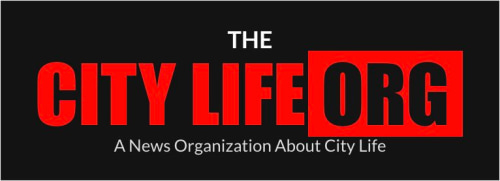
Opening September 5, Public Art Fund will present Edra Soto: Graft, the latest iteration in an ongoing series of architectural interventions, in an exhibition at Central Park. With her first large-scale public art commission in New York City, Soto will continue her sculptural practice of using rejas, the patterned wrought iron screen-like gates ubiquitous in post-war Puerto Rican architecture, to create a monument to lower and middle-class Puerto Rican communities.
Soto is a Puerto Rican-born artist, curator, and educator who has lived and worked in Chicago since 1998. With Graft, she draws inspiration from Puerto Rican architecture to address the complex sentiments generated from migrating to the US while remaining connected to family on the archipelago—a feeling of dislocation compounded by its ambiguous status as an unincorporated territory. Soto considers her architectural interventions to be an extension of self that can manifest anyplace she lives; the series title, Graft, alludes to this.
Her Public Art Fund-commissioned installation will be composed of red terrazzo concrete and corten steel and will include three tables with seats. As Graft’s central motif, Soto’s rejas are crafted in various forms and materials to mimic original designs of middle-class Puerto Rican homes. Casting playful shadows and evoking a comforting sense of the island, Graft at Central Park will feature geometric patterns reminiscent of Caribbean palm leaves, inspired by Yoruba symbols from West Africa, a prominent influence on Puerto Rican design. With these evocative elements, Soto reflects on themes of migration, displacement, and the search for belonging, using the series as a means to expose the true origins of the local aesthetic, and investigate cultural memory which often masks the Black heritage of the island as folklore.
“The rejas make perfect sense to me, as an expression of self. They exist and are understood as a formality in art, but they can live in invisibility because they are not meant to be contemplative,” Soto says. “As decorative patterns from a common house, they are meant simply to be pleasant enough to be a part of living spaces.”
Popularized during times of rampant crime in the post-war era, rejas are a signature mid-century architectural element used to create a protective barrier and demarcate a boundary. Soto has constructed previous iterations of Graft from metallic adhesives, wood, wrought iron, aluminum, and rough and polished concrete. With the series, Soto considers the ways architectural features mediate the way we relate to the world around us, delineating what belongs “inside” versus “outside,” emphasizing notions of private and public life.
At once expansive and intimate, the exhibition will beckon audiences into a domestic-feeling space within the bustling city called “home” by millions–for contemplative rest, a lunch break, or community building over a game of dominos, a popular pastime of the Afro-Caribbean diaspora in New York City. In collaboration with Soto, Public Art Fund and The Clemente Soto Velez Cultural and Educational Center will host gatherings and dominos tournaments to activate the exhibition.
“Graft at Central Park invites viewers to contemplate the resilience of cultural identity, and the diasporic experiences which have infused New York City’s history and present day,” says Public Art Fund Senior Curator, Melanie Kress. “Inspired by homes in Puerto Rico, Soto’s installation will encourage connection in a communal space where people can reflect on their shared histories and celebrate their diverse cultural heritage.”
Graft alludes to the aesthetic, decorative, and nostalgic qualities of rejas by transplanting their representation to structures in the U.S. Ideas of familiarity and home, and the physical, psychological, and communication barriers that keep one from “belonging” are represented in the architectural dissonance between Soto’s installations and their surrounding environments. Exploring the ways migration shapes physical and social identity, her sculptural language articulates the feelings of displacement and strangeness felt by immigrants in a new land.
ABOUT THE ARTIST
Edra Soto (b. 1971) is a Puerto Rican-born artist, educator, and co-director of outdoor project space The Franklin. Soto instigates meaningful, relevant, and often difficult conversations surrounding socioeconomic and cultural oppression, erasure of history, and loss of cultural knowledge. Having grown up in Puerto Rico, and now immersed in her Chicago community, the artist has evolved to raise questions through her work about constructed social orders, diasporic identity, and the legacy of colonialism.
Soto has presented recent solo exhibitions at Comfort Station, IL (2024); Hyde Park Art Center, Chicago, IL (2023); Institute of Contemporary Art, San Diego, CA (2023); and Abrons Art Center, New York, NY (2021). Her work has been featured in notable recent group exhibitions including Entre Horizontes, Museum of Contemporary Art Chicago, IL (2023); no existe un mundo poshuracán, Whitney Museum of American Art, New York, NY (2022); Widening the Lens: Photography, Ecology, and the Contemporary Landscape, Carnegie Museum of Art, Pittsburgh, PA (2024); and Estamos Bien, La Trienal 20/21, El Museo del Barrio, New York, NY (2021).
She has been awarded the Joan Mitchell Foundation Painters & Sculptors Grant; Bemis Center’s Ree Kaneko Award; and US LatinX Art Forum Fellowship; and MacArthur Foundation International Connections Fund. Soto has received numerous public commissions, for Noor Riyadh, Saudi Arabia (2024); Now & There, Central Wharf Park, Boston, MA (2023); the Chicago Architecture Biennial, IL (2023); and Millenium Park in Chicago, IL (2019). Her work is in the collection of institutions including the Whitney Museum of American Art, New York; Museo de Arte de Puerto Rico; Museo de Arte Contemporaneo de Puerto Rico; and Museum of Contemporary Art of Chicago.